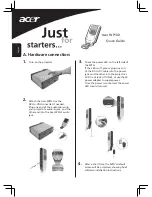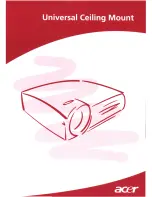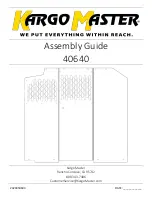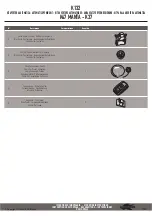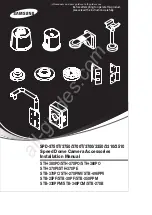
MY23I0a - 42_1.0_29.08.2023
34
Description
Carcass
The carcass is the tyre’s supporting structure.
There are usually three carcass plies beneath the
tread. The carcass comprises a webbing with
threads, usually made of polyamide (nylon). The
webbing is coated with rubber on both sides and
cut at an angle of 45°. The carcass gives the tyre
stability thanks to this cut at an angle to the
direction of travel. The carcass plies are woven
with different densities, depending on the quality
of the tyres. The density of the carcass fabric is
indicated by the number of threads per inch, in
EPI (
ends per inch
) or TPI (
threads per inch
).
There are tyres with between 20 and 127 EPI
carcasses.
If the EPI value is higher, the diameter of the
threads used is lower. Carcass plies with a higher
EPI value have threads with a smaller diameter.
The higher the EPI value:
• the less rubber is needed to encase the threads,
• the lighter the tyres are
• the more flexible the tyres are and they
consequently have less rolling resistance.
• The webbing is denser so that it is more
difficult for foreign bodies to penetrate. This
increases puncture resistance.
In carcasses with 127 EPI, each individual thread
is just 0.2 mm thick and, consequently, more
susceptible to damage. This means that a 127 EPI
tyre offers low puncture protection. 67 EPI offers
the optimum compromise between weight and
robustness.
Besides the webbing, the tyre’s rubber compound
is also important. The rubber compound
comprises numerous parts:
Tread with profile
A rubber tread is attached to the exterior of the
carcass.
The tread has little influence on riding characteristics
on a smooth road. The grip between the road and
tyre is mainly provided by the rolling friction between
the rubber and the road surface.
Slicks and road tyres
Unlike cars, a pedelec will not aquaplane. The tread
contact is small and the contact pressure high.
Thanks to the small contact surface on narrow and
treadless tyres, the tyre interlocks with the road
surface finish. Theoretically, the tyre will not
aquaplane until speeds of 200 km/h are reached.
On a clean road, whether dry or wet, slick tyres will
grip more effectively than treaded tyres because the
contact surface is larger. The rolling resistance of
slick tyres is also lower.
Off-road tyres
The tread is highly important on terrain. In this case,
the tread creates an interlock with the ground, thus
enabling the driving, braking and steering forces to
be transmitted. The MTB tread can also help improve
control on dirty roads or farm tracks.
Tread blocks on MTB tyres deform as they meet the
contact surface. The energy used for this is partly
converted into heat. Another part is stored and
converted into the tread block’s sliding movement
when it leaves the contact surface, which contributes
to the tyre’s wear.
If a tyre with a deep tread is used on asphalt, this
may make an unpleasant noise. If a pedelec with an
MTB tyre is mainly ridden on the road, it is thus best
to change the tyre for a pair of tyres with as little tread
as possible to reduce wear and save energy. In such
a case, the specialist dealer needs to replace the tyre
with a new one with a shallow tread.
40 … 60%
Natural and synthetic rubber
15 … 30%
Fillers, e.g. carbon black, silicic acid or silica
gel
20 … 35%
• Anti-ageing agent
• Vulcanisation agent, e.g. sulphur
• Vulcanisation accelerator, e.g. zinc oxide
• Pigments and dyes
Table 11: Rubber compound in carcasses
Summary of Contents for E5 ZR F
Page 231: ...MY23I0a 42_1 0_29 08 2023 231 Documents Notes...
Page 242: ...MY23I0a 42_1 0_29 08 2023 242 Documents 11 4 Charger operating instructions ABCDE...
Page 243: ...MY23I0a 42_1 0_29 08 2023 243 Documents F 4A Charger DCG F H A I A J...
Page 244: ...MY23I0a 42_1 0_29 08 2023 244 Documents F A I A J DCG F H...
Page 245: ...MY23I0a 42_1 0_29 08 2023 245 Documents F DCG F H A I A J...































